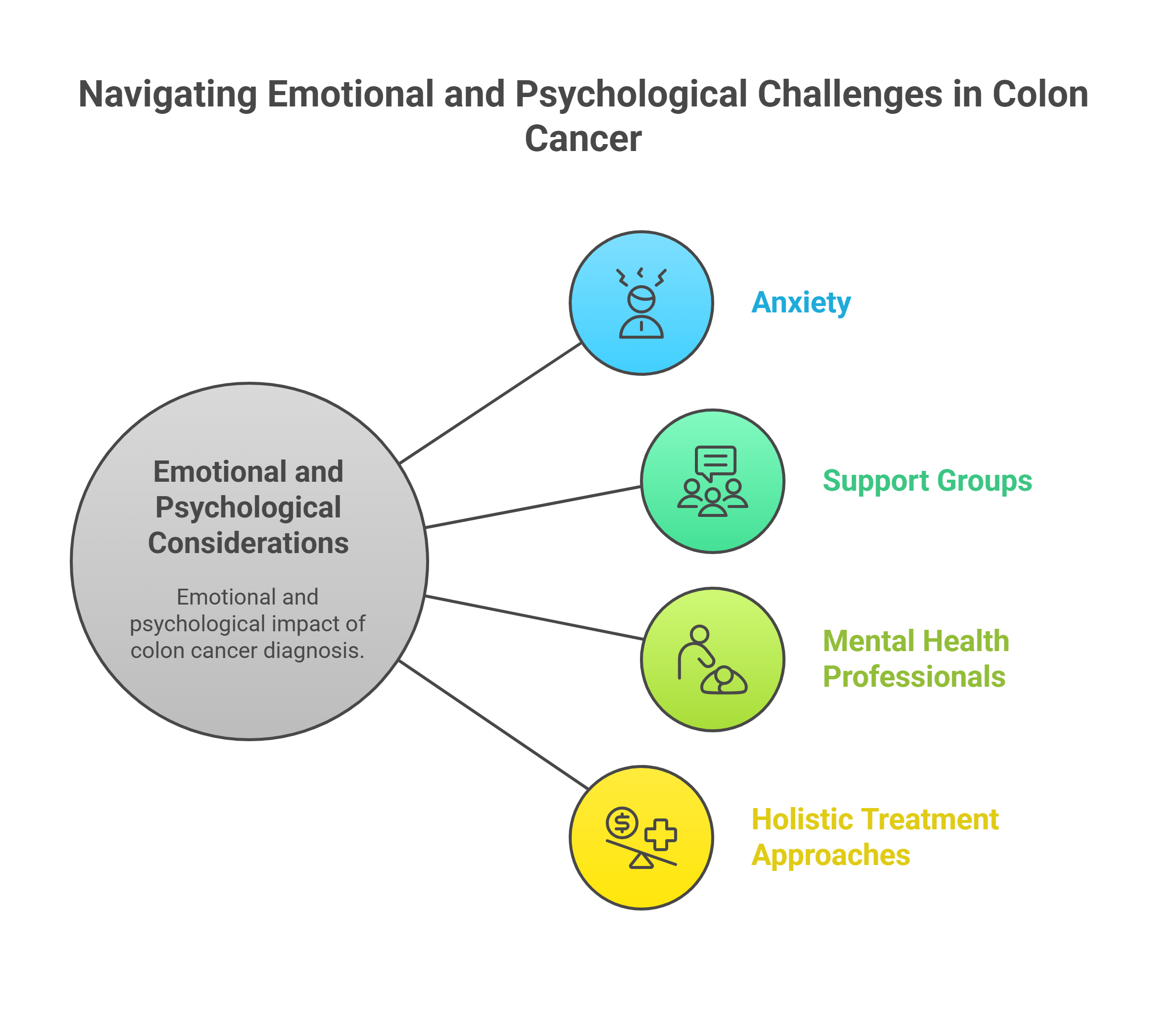Imagine this: Up to 40% of people over age 50 develop colon polyps —but rarely do we think about how quickly they can grow or whether they pose real danger. If you’ve ever wondered, " how fast can colon polyps grow? " or worried about their connection to colon cancer , you’re not alone. This article takes you inside the surprising truth about colon polyp growth rate , cancer risk, why regular screening matters, and what you must do now to stay protected.The Eye-Opening Facts: How Fast Can Colon Polyps Grow Compared to Colon Cancer"Did you know? Up to 40% of people over age 50 will develop colon polyps, but not all polyps grow at the same rate." – American Cancer SocietyWhen discussing colon polyps , it’s shocking to learn how prevalent they are among adults—particularly those over age 50. What truly stands out is that not all polyps grow at the same speed. While some colon polyps remain harmless for years, others can grow rapidly and transform into colon cancer faster than expected. This variability in colon polyp growth rate underscores the critical importance of timely colon cancer screening and regular medical checkups.Colon polyps are abnormal growths or lumps that develop within the large intestine and can vary in their potential to become cancerous. Their potential progression from a benign lesion to something more serious, like colorectal cancer , is determined by both their type and growth speed. In general, cancerous transformation is a slow process, but overlooking high-risk polyps or missing screenings could put you or your loved ones at higher risk of developing colon or rectal cancer. Next, let’s explore what colon polyps really are and why understanding the difference in types is key for your health.It's also important to recognize that some symptoms of colon cancer can be subtle or easily overlooked, making awareness of early warning signs just as vital as understanding polyp growth rates. For a real-world perspective on how symptoms may present, consider reading this cautionary account of hidden symptoms of colon cancer and what you should watch for.What Is a Colon Polyp? Differentiating Types and Their Growth RateA colon polyp is a small cluster of cells that forms on the lining of your large intestine or rectum. While these growths are often discovered during routine colonoscopy or other cancer screening tests, understanding what defines them is crucial. Not all polyps are created equal—some remain benign throughout your life, whereas others, especially certain types, pose a real risk of developing into colorectal cancer.Adenomatous polyps , also referred to as adenomas, are considered precancerous and are responsible for most colorectal cancers. Hyperplastic polyps and inflammatory polyps tend to be smaller and rarely turn into cancer. Meanwhile, serrated polyps—especially when large or found in the upper colon—carry an intermediate risk. Polyps can occur anywhere in the large intestine, but their location (colon vs. rectum) and histological features matter because they may influence the eventual growth rate and risk for colon cancer.Whether a polyp is located in the colon or rectum, what ultimately matters is its type, size, and histological features. Health guidelines recommend vigilance, especially for those with a family history or past occurrences. Identifying and removing these growths during colon cancer screening or routine colonoscopies significantly reduces both the number of polyps—and your risk of developing colon or rectal cancer.How Fast Can Colon Polyps Grow? Average Growth Rate Compared to Cancer"On average, most colon polyps grow slowly—taking 5 to 10 years to become cancerous if at all." – National Institutes of HealthComparison of Colon Polyp Growth RatesPolyp TypeTypical Growth RateTransformation Risk (Cancer)AdenomatousSlow, 5-10 yearsHighHyperplasticVery SlowLowSerratedIntermediate (Varies)Moderate to High (If large)The growth rate of a colon polyp is a central concern for both patients and physicians. Most polyps grow slowly , taking years to reach a size of clinical concern. Studies suggest that, on average, a potentially cancerous adenomatous polyp may require 5 to 10 years to develop into malignancy, giving doctors a crucial window for early detection and removal. However, not all polyps follow this gradual pattern. Serrated and adenomatous types demand more careful observation due to their potential for faster progression.Multiple risk factors can influence how fast polyps grow , including genetics, lifestyle choices, chronic inflammation, and coexistence of diseases such as inflammatory bowel disease. Warning signs that a polyp may be growing quickly include sudden changes in bowel habits, unexplained bleeding, or a rapid increase in the size detected during follow-up scans or colonoscopies. Monitoring via regular screening is thus the cornerstone for catching these dangerous changes before they blossom into cancer cells.Polyps Grow: What Speeds Up or Slows Down Growth Rate?"Polyps may grow faster in people with a family history of colon cancer or inflammatory bowel disease." – Mayo ClinicThe speed at which colon polyps grow isn’t dictated by chance alone. A major influence is genetic predisposition. Individuals with inherited syndromes, a family history of colon cancer , or a prior history of polyps face a notably higher risk of rapid polyp growth and malignant transformation. For these patients, early and frequent screening becomes even more critical.Lifestyle choices also play a meaningful role in polyp growth rate. Diets low in fiber and high in processed meats, smoking cigarettes, excess alcohol use, and a sedentary lifestyle collectively accelerate the formation and expansion of colon polyps.Conversely, adopting healthy eating habits, regular exercise, and avoiding tobacco and excess alcohol can help slow down their development. Patients with chronic diseases—especially those with inflammatory bowel disease (IBD)—may see an increased rate of new polyp formation, further heightening their cancer risk.Animated Explanation: How Fast Can Colon Polyps Grow and What Influences Growth RateRecognizing High-Risk Colon Polyps: Adenomatous Polyps and Serrated LesionsOf all the colon polyp types, adenomatous polyps stand out for their clear cancer risk. These growths, if left unchecked, are the most likely to develop into colorectal cancer. Their size, cellular structure, and presence of dysplasia (abnormal cell changes) inform doctors about the urgency and frequency of follow-up. Adenomatous polyp growth rate is often slow but direct, making early removal the best cancer-prevention tactic.Serrated polyps are the next most concerning. While traditional wisdom considered hyperplastic polyps relatively harmless, it’s now clear that some serrated varieties, especially larger or proximal colon ones, carry a moderate to high risk for turning into cancer cells. This revelation means regular surveillance is also required for patients with serrated lesions.Growth Rate Differences: Adenomatous Polyps vs. Hyperplastic PolypsAdenomatous polyps typically grow slowly , taking between five and ten years to reach a stage where they can become cancerous. However, factors such as genetic mutations or chronic inflammation may speed things up considerably. Monitoring growth through frequent colonoscopies and adhering to removal guidelines can help prevent these polyps from advancing to rectal cancer or colon cancer.Hyperplastic polyps are, for the most part, very slow-growing and carry little risk for malignancy unless associated with a rare genetic mutation or found in large quantities. That said, if a hyperplastic polyp is unusually large, especially in the proximal colon, it may require closer examination to rule out the possibility of hidden serrated neoplasia.Ultimately, knowing your polyp type and working closely with your doctor to track any change in size or number will go a long way toward reducing the risk of these growths turning into dangerous cancer cells. Proactive care—especially for those at higher risk —is the best defense against life-changing complications.Colonoscopy and Colon Polyp Growth: How Fast Can Polyps Reappear?Colonoscopy Intervals and Average Polyp Growth RateRisk GroupSuggested IntervalNotes on Growth RateAverage Risk Adult (No Polyps)Every 10 YearsSlow polyp development; lower riskHistory of Adenomas3-5 YearsHigher recurrence; faster monitoring requiredHigh Risk (Family History, IBD)1-3 YearsPolyp regrowth can be fasterRegular colonoscopy remains the gold standard for early detection of colon polyps and effective prevention of colon cancer. Experts recommend average risk adults start screening at age 45, with more frequent exams for those with a family history of cancer or prior polyps. It’s possible for new polyps to appear as quickly as 1–3 years after removal, especially in higher risk populations; thus, close surveillance and adherence to your recommended schedule is essential.The speed at which polyps grow back post-removal depends on a range of factors, including polyp type, genetics, and the presence or absence of chronic inflammation. The key takeaway is: frequent follow-up, particularly for patients who have had polyps removed, is your strongest safeguard against the rare but real risk of rapid regrowth and subsequent colorectal cancer. Early detection and removal alters the outcome dramatically.Video Explanation: Colonoscopy and Early Detection of PolypsColon Polyp to Colon Cancer: How Fast Can Progression Happen?"Most colon cancers develop slowly from precancerous polyps over 10 years or longer." – Centers for Disease Control and PreventionThe natural history of a colon polyp progressing to cancer typically spans several years. The transformation involves gradual changes, from small benign lesions to dysplastic (precancerous) forms, and finally, to invasive cancer cells. The entire process usually requires 5–10 years, but larger, advanced polyps—especially those exceeding 1cm or with a villous histology—pose an increased risk for faster malignant conversion.That’s why it is critically important to remove high-risk adenomatous and serrated polyps early, minimizing the chance of them becoming cancer cells. Regular cancer screening ensures that even outliers—polyps that might grow faster—are discovered while still harmless. Ultimately, size, cellular makeup, and family or health history determine which polyps demand the most aggressive management plan.Warning Signs: When Should You Be Concerned That Colon Polyps Grow Rapidly?While most polyps cause no symptoms, certain warning signs warrant immediate attention. Rectal bleeding , a sudden change in bowel habits, unexplained abdominal pain, or the presence of iron-deficiency anemia may signal that a polyp is growing rapidly or has become malignant. Such symptoms require prompt medical evaluation and diagnostic imaging or colonoscopy.If you experience worrying symptoms or have a family history of colon cancer , reach out to your healthcare provider for advice on accelerated screening or further diagnostic steps. Early detection is not just beneficial—it’s potentially life-saving and can prevent otherwise preventable colorectal cancers.Detecting Colon Polyp Growth Early: Screening, Genetics, and Advanced MethodsTimely identification of colon polyps is the primary defense against colorectal cancer. Genetic testing can help predict patients at higher risk for developing aggressive polyps, especially those with familial adenomatous polyposis or Lynch syndrome. Knowing your family history and considering genetic screening provides valuable data for individualizing your cancer screening schedule.Recent technological advances—such as high-definition imaging, computer-aided polyp detection, and even liquid biopsies—are revolutionizing early detection. These innovations mean more subtle and rapidly growing polyps can be identified and removed before progressing. Working closely with your healthcare team and staying abreast of personalized screening tools is an investment in your long-term health.Expert Interview: Managing Risk Factors for Rapid Colorectal Polyp GrowthCan Colon Cancer Develop in 1 Year? Fast-Growing Polyps and Rare CasesWhile most colon cancers take years to develop, rare cases—often related to genetic syndromes—may progress within a single year. Regular screenings are essential to catch aggressive polyps early.How Long Does a Colon Polyp Take to Grow? Typical Timelines and OutlierColon polyps often take between 5 and 10 years to grow to a size where they could become dangerous, with exceptions based on individual health and risk factors.How Much Does a Colon Polyp Grow Per Year? Facts and FiguresMost colon polyps grow no more than 1-3 mm per year, but adenomatous polyps may increase in size quicker and merit closer monitoring.Can a Colon Polyp Become Cancerous in 3 Years? What Research SaysThough uncommon, some polyps have been shown to become cancerous in as little as 3 years, particularly when risk factors are present or colonoscopic surveillance is delayed.Reducing Your Risks: Lifestyle Strategies and Preventive Tips to Manage Colon Polyp Growth RateImprove fiber intake and maintain a healthy dietQuit smoking and reduce alcohol consumptionManage chronic conditions proactivelyAdhere to your colonoscopy scheduleLifestyle Changes vs. Impact on Colon Polyp Growth RateLifestyle ChangeImpact on Growth RateIncrease dietary fiberSlows polyp formationQuit smokingReduced recurrence/growthReduce alcoholLower polyp riskExercise regularlyDecreased polyp and cancer ratesFAQs on Colon Polyp Growth Rate, Colon Cancer, and ColonoscopyHow can I tell if a colon polyp is growing fast?Most polyps do not cause symptoms, but warning signs of rapid growth include new or worsening rectal bleeding, unexplained anemia, or sudden changes in bowel movements. If you have a family history or higher risk factors, regular screenings with your doctor are essential for early detection.Are all colon polyps dangerous?Not all colon polyps are dangerous. Adenomatous and some serrated polyps can turn into cancer cells over time, while most hyperplastic polyps remain harmless. Knowing your polyp’s type and following up with your healthcare provider determines your actual risk.Does removing a polyp mean I’m safe from colon cancer?Removal significantly reduces your risk but does not eliminate it entirely; new polyps can develop, and ongoing surveillance is necessary—especially for those at higher risk or with a history of polyps removed. Sticking to your recommended colonoscopy schedule keeps your risk as low as possible.How often should I get screened for colon polyps?Cancer screening guidelines recommend colonoscopy every 10 years for average-risk individuals. Those with a family history of colon cancer or prior adenomatous polyp detection may need more frequent (every 1–5 years) screening, as advised by your gastroenterologist.Summary of Key Insights on How Fast Colon Polyps GrowColon polyps typically grow slowly, with average transformation to cancer taking 5-10 yearsNot all polyps are the same—adenomatous and serrated polyps require closer monitoringRegular colonoscopy is the most effective way to prevent polyp growth turning into colon cancer"Awareness and regular screening remain your best defense against the risks of colon polyps and colon cancer." – Prevent Cancer FoundationTake charge of your colon health—ask your healthcare provider about your risk for colon polyps, schedule regular colonoscopies, and make lifestyle changes proven to slow polyp growth.If you’re interested in taking your prevention strategy even further, it’s worth exploring how the balance of gut bacteria can influence your risk for colon cancer and polyp development. Understanding the relationship between your microbiome and colorectal health can open new doors for proactive care and advanced prevention.For a deeper dive into this emerging area, discover why gut bacteria play a crucial role in colon cancer risk and how you can leverage this knowledge for long-term wellness.Act now: Schedule your colonoscopy, adopt healthy habits, and discuss your family history with your doctor to minimize your risk of colon polyps and cancer.Sourceshttps://www.cancer.org/cancer/colon-rectal-cancer/about/what-is-colorectal-cancer.html – American Cancer Societyhttps://www.cdc.gov/cancer/colorectal/basic_info/risk_factors.htm – Centers for Disease Control and Preventionhttps://www.mayoclinic.org/diseases-conditions/colon-polyps/symptoms-causes/syc-20352875 – Mayo Clinichttps://www.cancer.gov/types/colorectal/patient/colorectal-treatment-pdq – National Cancer Institutehttps://www.preventcancer.org/ – Prevent Cancer FoundationUnderstanding the growth rate of colon polyps is crucial for assessing their potential to develop into colorectal cancer. Generally, most colon polyps grow slowly, often taking between 10 to 15 years to become cancerous if they do at all. ( health.clevelandclinic.org ) However, certain factors can influence this progression.Types of Colon Polyps and Their Growth RatesAdenomatous Polyps (Adenomas): These are considered pre-cancerous and are the type most associated with developing colon cancer. They can take many years to develop into cancer, typically 10 to 15 years. ( colorectalsurgery.com.sg )Hyperplastic Polyps and Inflammatory Polyps: These are generally not considered pre-cancerous. They are more common and usually don’t carry the same risk of developing cancer as adenomas do. Their growth rate is similar to that of adenomas, but they are less likely to develop cancer. ( colorectalsurgery.com.sg )Factors Influencing Polyp Growth RateSeveral factors can affect the growth rate of colon polyps and their potential to become cancerous:Size of Polyp: Polyps larger than 1 cm have a significantly increased risk of containing cancerous cells. ( colorectalsurgery.com.sg )Number of Polyps: Individuals with multiple polyps, a condition known as polyposis, have a higher risk for colorectal cancer. ( colorectalsurgery.com.sg )Genetic Factors: Conditions like familial adenomatous polyposis (FAP) and Lynch syndrome are associated with a higher risk and more rapid growth of polyps. ( colorectalsurgery.com.sg )Age: Polyp prevalence increases with age, with a significant rise in individuals over 50 years old. ( colorectalsurgery.com.sg )Diet and Lifestyle: Diets high in red and processed meats and low in fiber, along with obesity, smoking, and physical inactivity, are linked with an increased risk of colorectal cancer. ( colorectalsurgery.com.sg )Inflammatory Bowel Disease: Chronic inflammation from conditions like ulcerative colitis or Crohn’s disease is associated with an increased risk of colorectal cancer. ( colorectalsurgery.com.sg )Importance of Regular ScreeningGiven the potential for polyps to develop into cancer over time, regular colorectal screenings are essential. The American Cancer Society recommends beginning colorectal cancer screenings at age 45. Earlier testing is encouraged if you have elevated risk factors such as a family history of colorectal cancer. ( health.clevelandclinic.org )By understanding the types of polyps, their growth rates, and the factors influencing their development, individuals can take proactive steps through lifestyle modifications and regular screenings to reduce their risk of colorectal cancer.


 Add Row
Add Row  Add
Add 




Write A Comment